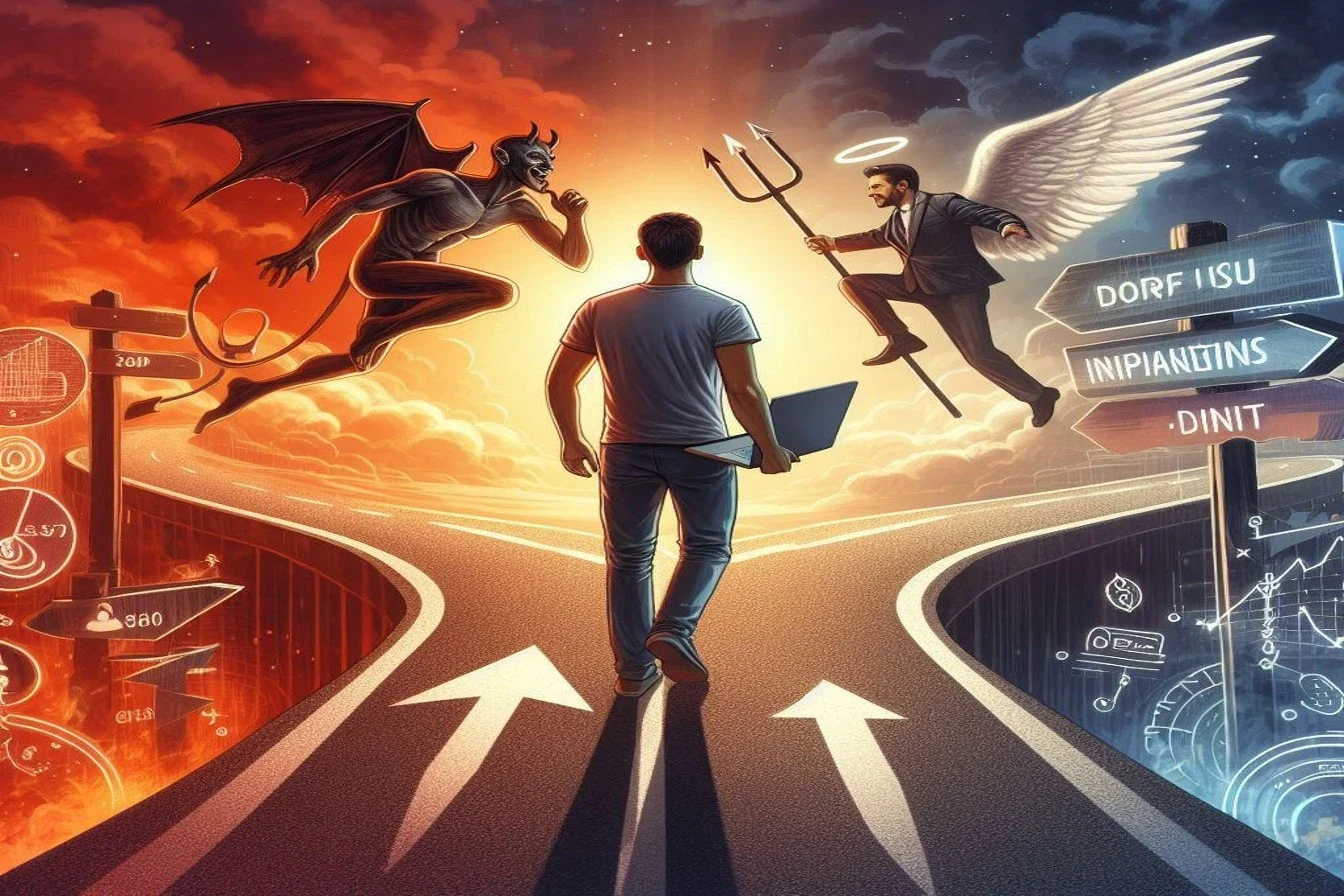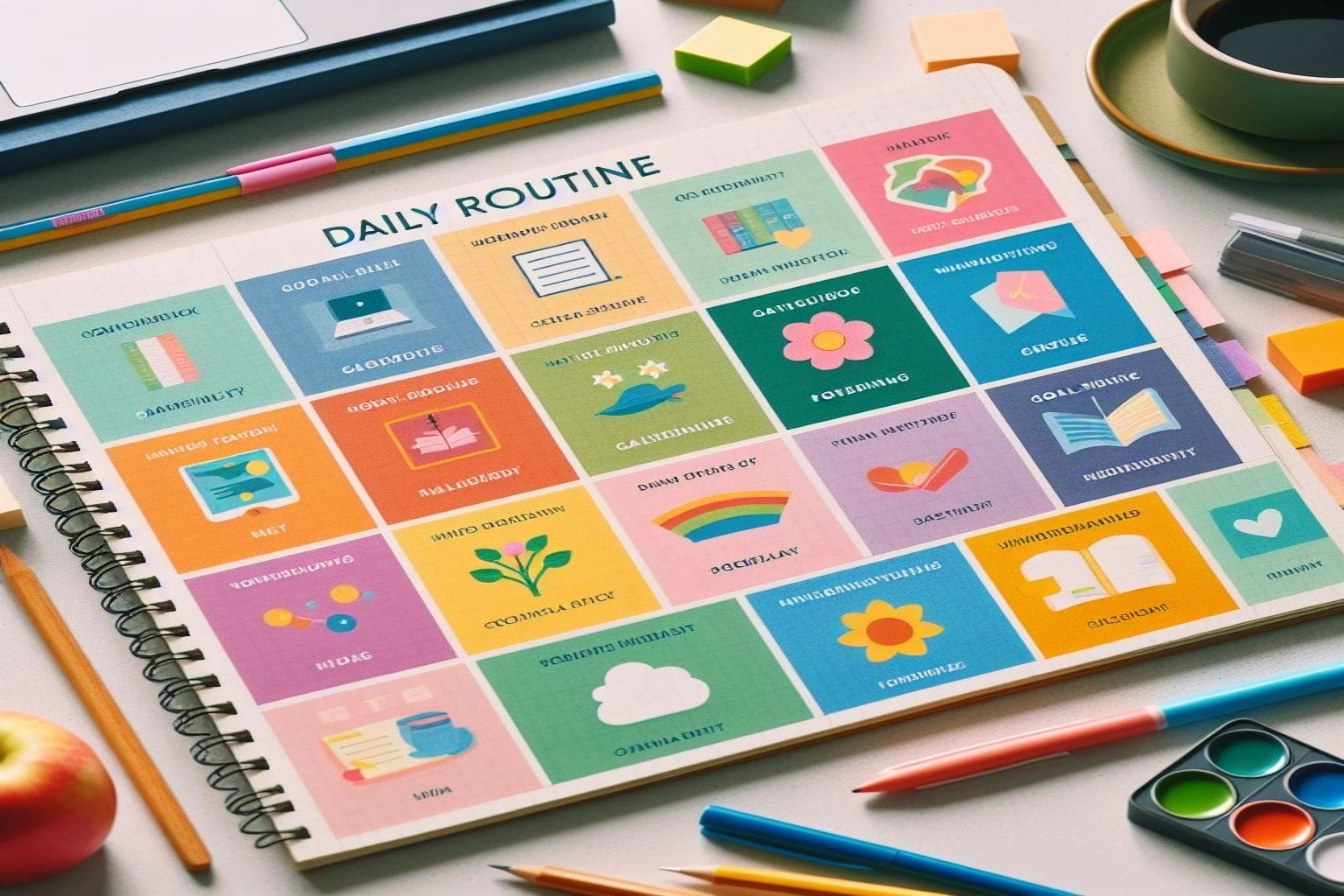
Do you ever find yourself agonizing over decisions? Weighing pros and cons endlessly, confident you’ve finally made up your mind only to second guess yourself hours later?
We all experience analysis paralysis now and then, but chronic indecision can seriously impact our confidence, productivity and performance.
What if you could shortcut all that unnecessary deliberation and start making flawless intuitive choices effortlessly instead? Turns out you can, by leveraging a cognitive skill called flow-based decision making.
In this article you’ll discover:
- What flow-based decision making is and why it leads to better choices
- The root causes of analysis paralysis and chronic indecision
- How to unleash dormant supercomputer-like processing capabilities in your own brain to make intuitive decisions
- A simple 3 step framework for flow-based decision making
- How to cement rapid intuitive thinking as your brain’s default
Let’s start by examining why we struggle with decision fatigue in the first place.
The problem of Chronic Over-Deliberation
Israeli-American psychologist Daniel Kahneman discovered humans have two distinct modes of thinking:
System 1 operates automatically and quickly, governing instincts and gut reactions. It allows us to rapidly assess patterns and make intuitive choices – like effortlessly navigating ever-changing terrain as you run downhill.
System 2 represents our slower, analytical mode of thinking. It handles conscious reasoning, deliberation and weighing pros and cons. This is the system at work when carefully considering a major decision.
Here’s the problem: our default is to over-rely on energy-intensive system 2 thinking. We conflate more deliberation with better outcomes, so we chronically deliberate even when the choice is relatively simple.
This locks us into analysis paralysis – endlessly toggling between options in a cognitively draining loop fueled by uncertainty and self-doubt. System 2 quickly becomes a bottleneck, using up precious mental bandwidth. Not only is chronic over-thinking exhausting, it often leads to worse decisions, not better ones.
When we get stuck in deliberation mode, our confidence erodes along with our ability to tune into wisdom beyond the conscious mind. We lose access to our intuitive capacities. But what if you could shortcut all that draining analysis and start tapping straight into flawless intuitive thinking instead?
Turns out you can. It’s called flow-based decision making.
The Power of Flow-Based Decision Making
Flow state is characterized by effortless immersion in challenging activities. Athletes call it “being in the zone”, artists “finding the muse” – that sweet spot of peak performance where everything just clicks.
A key signature of flow is flawless intuitive decision making. Think of the improv jazz musician entranced by creative synergy with bandmates, fingers flowing across piano keys automatically, not a conscious thought given to the next note.
Or consider the surfer, body and board merging in perfect harmony with the wave, navigating left and right, riding tunnels and cresting lips by sheer intuitive reaction alone. No time for deliberation when split-second choices determine if you ride or wipe out.
Flow researcher Lori Yoto explains flow can be thought of as “intuitive action” while intuition is just “cognition in flow”. This reveals a clue: the rapid-fire intuitive decision making capacities activated in flow can actually be extracted and applied to all thinking. No flow state required.
This is the essence of flow-based decision making – taking the flawless intuitive abilities cultivated in flow and using them to enhance choice making whenever you want. Flow-based decisions leverage subconscious processing capabilities far exceeding our conscious limits. Think of it as gaining access to your brain’s hidden supercomputer.
The result? Faster, superior decisions made with minimal mental effort. No more analysis paralysis. Just intuitively aligned choices flowing effortlessly.
Now let’s look at how it works.
The 3 Step Flow-Based Decision Making Framework
While entering actual flow states through total immersion training is extremely powerful, you can unlock surprisingly effective intuitive decision making capacity through a simple 3 step framework:
1. Precisely define the problem
2. Recruit your adaptive subconscious
3. Allow time for incubation
Let’s walk through each stage:
1. Precisely Define The Problem
A decision is nothing more than a proposed solution to a problem. Without clearly defining the problem first, we risk solving for the wrong thing altogether. It helps immensely to separate the actual problem from surface level symptoms.
For example, if your initial problem is “Which car should I buy?” – the root decision that needs addressing might actually be “How can I reliably get myself to work each day regardless of traffic?”. Just by redefining the problem, new solutions open up. Like getting a rideshare subscription service over purchasing a vehicle outright.
Spend time probing below superficial issues to uncover the true decision that needs solving. Ultimately you want to define the problem in a way that clicks and feels exactly right before moving to the next step.
2. Recruit Your Adaptive Subconscious
Once you’ve precisely defined the problem, pose an open-ended question to activate your adaptive subconscious – what psychologist Timothy Wilson calls the “silent operator”.
The silent operator is your brain’s rapid response intuition and analysis unit, constantly scanning for patterns among memories, environmental cues and sensory data. When you experience a hunch or gut feeling, that’s your subconscious pattern recognition system knocking on the door.
By posing an expansive question like “What factors are most essential for me to consider here?” or “What is the simplest route to an ideal outcome?”, you actively recruit your silent operator to start churning through possibilities.
This kicks your brain’s hidden supercomputer awake, allowing your adaptive subconscious to uncover insights beyond conscious awareness.
3. Allow Time For Incubation
Now comes the counterintuitive but critical final step – walk away and resist the urge to keep deliberating! Doing so enables the crucial incubation phase, allowing your subconscious to assemble insight unperturbed.
Imagine your conscious mind is a narrow spotlight while your subconscious encompasses the entire warehouse. Incubation enables your full warehouse-wide mental resources to analyze the defined problem from all angles and percolate solutions to the surface.
But how exactly does stepping away lead to enhanced problem solving and decision making capacity? Two key mechanisms are at play:
Allowing Conscious Distraction
When you disengage conscious focus from a problem, your system 1 intuitive capabilities keep processing away in the background. Activities like cleaning, gardening or a shower seem pointless to problem solving, but that’s precisely why they work! They fully distract your deliberate system 2 mode just enough to hand the baton back to intuitive system 1.
Studies confirm even brief conscious distraction massively increases solution rates for challenging problems compared to constant concentration.
Activating The Default Mode Network
The default mode network is a series of brain regions closely linked to imagination, insight and rich sensory imagery. When you relax conscious constraints on a problem, you grant this critical creative system permission to unpack the full spectrum of considerations that conscious dwellers often censor as not logical enough.
Incubation shifts you from a convergent task-focused network into expansive default mode processing. This allows radically novel solutions to take shape powered by heightened lateral thinking.
Nascent research reveals even brief default mode activation through mindfulness practices can double creative solution rates on complex analytical tasks.
In essence, stepping away from a decision paradoxically moves you radically closer to the optimal intuitive choice by enabling these dual cognitive dynamics.
Over time, regularly outsourcing problem solving to your mental backstage apparatus strengthens subconscious processing power while taking pressure off conscious thought.
Extracting The Decision
Now, during the incubation phase which can last hours, days or even weeks depending on the decision’s complexity, keep a pen and paper handy.
When your adaptive subconscious surfaces an insight, capturing it immediately through journaling ensures it remains vivid. A simple voice memo on your phone works brilliantly too.
Then when adequate incubation feels complete, review your notes and start writing out solutions to the problem you originally defined. Notice what arises. Often a clear intuitive pathway will gel instantly, flowing from subconscious depths. That “Voila!” moment of epiphany.
Other times, a few options may cascade out to pick from. If the optimal route doesn’t land conclusively quite yet, ask yourself:
“If I had to decide right now and could only choose one, which would I gravitate toward?”
Often that little nudge of pressure provokes a knee-jerk intuitive reaction revealing your deepest preference. Just give it a shot Either way, by moving through this decision making framework – intentionally defining problems, recruiting your powerful adaptive subconscious then extracting solutions – your natural intuitive abilities will strengthen immeasurably.
Over time, these types of fast intuitive choices normally requiring flow states become completely available on demand outside those absorbed states.
3 Advanced Tips To Cement Intuitive Thinking
To further cement rapid intuitive thinking as your default decision making approach, here are 3 additional research-backed tactics:
Write It Down
The act of externalizing problems and decisions through writing vastly increases the chances your choices manifest by encoding details into long term memory. It also communicates to your brain: “This is important. Pay attention!” Writing by hand works best.
Track Outcomes
Make a habit of recording key details of pivotal decisions. Then review your journal later and check results. This accelerates the positive feedback loops cementing intuitive skill mastery. Our brains evolved to track what works over time. Make it easy for yourself.
Coax Your Creative Cradle
Deepen your default mode network capacity through mindfulness, spending time in nature, dancing, singing in the shower and laughing frequently. These behaviours nurture imaginative powers fueling intuition.
Bonus Method – Try Total Immersion
While flow-based decision making unlocks astonishing intuitive potential on its own, entering fulsome flow states through total immersion takes benefits exponentially further.
Professional surfers, musicians, athletes, coders and more use total immersion training to sink into flow daily. The name says it all – fully submerge consciousness into a challenging yet doable task.
Like surfing a size or two above your current limit forcing dynamic present moment decision making. Or trail running a new complex route demanding eyes-open improvisation. Whatever your passion, total immersion loads your subconscious adaptivity muscle most potently of all, wiring lightning fast fluid choices.
Over to You
There you have it – a primer on unlocking your brain’s dormant supercomputer via flow-based decision making for easy access to flawless rapid intuitive choices. No more wasting days – even weeks – endlessly deliberating options without a confident landing point.
Now you can short circuit analysis paralysis and drop into your body’s natural decision making brilliance instead. Starting applying the 3 step flow-based decision making framework over the next few days. See what shifts. You might be startled how clearly optimal choices start cascading quickly even for complex issues.
This approach leverages natural subconscious strengths many cognitive hoard for themselves by dominating direction with rigid conscious thought.
You have a built-in supercomputer just below the surface hungering to assist if you know how to enlist it. Now that you do, step back and let your deeper intelligence flourish.
The more you practice trusting intuitive pull when facing daily choices small and large, the more automatic fluid decision making becomes. Until lightning fast perfectly aligned picks happen automatically without a glance backwards.








1 thought on “How to make right decisions every single time”
Nice Explanation